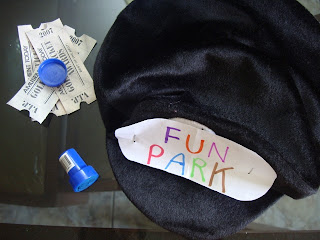A spelling bee is a competition where contestants, usually children, are asked to spell words. The concept is thought to have originated in the United States,
and spelling bee events are now held in many countries around the
world.
Serious spelling bee competitors in the United States will study affixes
and etymologies, and often foreign languages from which English draws,
in order to spell challenging words. Several preparatory materials have
been published, including some in connection with the Scripps National
Spelling Bee and those created by independent organizations not related
to Scripps. Spelling bee participants in the United States also use other reference books, notably the Hexco Academics
series of spelling books, which feature strategies, methods and lists
to further develop spelling skills. Tutoring materials are also becoming
available on the web.
Spelling bee students usually start competition in elementary or middle schools.
Classes compete against other classes in the same grade, or level, and
the winning class is determined by the score of each class. Then, the school spelling bee happens and the winner goes to the school district bee,
then county, then regional. After the regional spelling bee, if the student is qualified, he/she goes to the Scripps National Spelling Bee. This project was a little bit different from the original spelling bee because it was made only by our school, so we had semifinals inside each class (per year) and the finalist from each class on the school spelling bee final (per year).
The rules used on this spelling bee (semifinals and final) were the original ones:
1. In competition, after the pronouncer gives the speller a word, the speller will be encouraged to pronounce the word before spelling it and after spelling it. The judges may not disqualify a speller for failing to pronounce the word either before or after spelling it. But the judges will know that the speller is done if he or she pronounces the word after spelling it and the pronouncer will be assured that the speller has heard the word correctly if he or she pronounces it before beginning to spell it.
2. The speller may ask the pronouncer to say the word again, define it, and/or use it in a sentence. The pronouncer shall grant all such requests until the judges agree that the word has been made reasonably clear to the contestant. Judges may disqualify any speller who ignores a request to start spelling.
3. Having started to spell a word, a speller may stop and start over, retracing the spelling from the beginning, but in retracing there can be NO change of letters or their sequence from those first pronounced. If letters or their sequence is changed in the respelling, the speller will be eliminated. In other words, a speller can’t correct himself, even while it is still his or her turn.
4. The contest shall be conducted in rounds. Each speller remaining in the spelling bee at the start of a round shall spell one word in the round, except when there are two spellers remaining. (At that point, refer to Rule 6.)
5. If a word has one or more homonyms, the pronouncer will indicate which word is to be spelled. If the listed word is not properly identified, either by defining it or using it in a sentence, any correct spelling of any homonym of the word will be accepted.
6. When the number of spellers is reduced to two, the elimination procedure changes. At that point, when one speller misspells a word, the other speller shall be given an opportunity to spell that same word. If the second speller spells that word correctly, plus the next word on the pronouncer’s list, then the second speller shall be declared the champion.
If one of the last two spellers and the other, after correcting the error, misspells the new word submitted to him/her, then the misspelled new word shall be given to the first speller. If the first speller then succeeds in correcting the error and correctly spells the next word on the list, then he or she becomes the champion.
If both spellers misspell the same word, both shall continue in the contest and the one who first misspelled the word shall be given a new word to spell.
7. Protests may be filed by anyone (the speller, parent, teacher, etc.) wishing to reinstate a speller into the contest but will not be heard from any individual seeking to dislodge another speller from the competition. Deadline for filing a protest is before the speller affected would have received his/her word and he/she stayed in the contest. NO PROTEST will be entertained after that word has been given to another speller. Protests should be verbally made to a designated person immediately or upon completion of a round. It is especially important to speak up right away when there are only two or three spellers left.
8. Judges are in complete control of the competition. Their decisions are final. Spelling bees are not unlike sporting events in which referees call the plays as they see them. Players don’t always agree with the decisions or like them, but accept them as part of good sportsmanship.
9. This is the most important rule of all. Please have fun and relax, whether you’re a participant or a spectator.
Students had practiced for the competition for two months before it happened, through different types of spelling games. The students who didn't take part in the final could make posters to use on the final day to cheer for their classmates. All the words for the practice and the competition were taken from their English Books (in this case, Awesome and Mega). 1st, 2nd and 3rd places got gold, silver and bronze, respectively.



































































